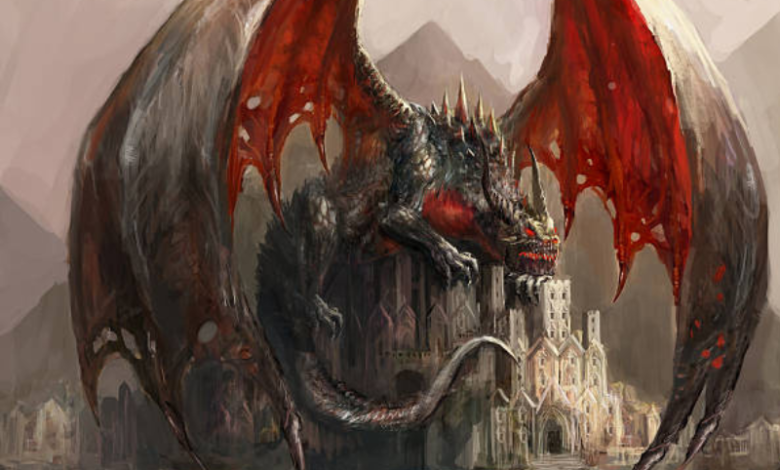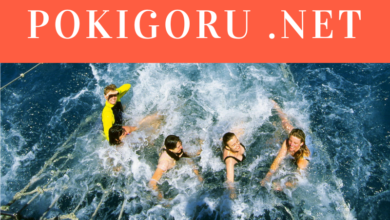The Magical World of Drageanimations: From Dragons to Delightful Digital Realities

Introduction
Dragons, mythical creatures that have fueled human imagination for centuries, now have a new platform: digital animation. In recent years, “drageanimations” have gained momentum, with creatives blending dragon-like creatures and advanced animation techniques to create stunning, larger-than-life visuals. Whether you’re an animation enthusiast or someone who just loves fantasy, drageanimations have something mesmerizing to offer. But what exactly are drageanimations, and how did they become such a hot trend?
Let’s dive into this fantastical realm, where the lines between reality and imagination blur, and dragons soar—literally and figuratively.
What Exactly Are Drageanimations?
If you’ve never heard of drageanimations before, don’t worry—you’re not alone. The term itself might seem a bit elusive at first, but its core concept is simple and oh-so-exciting. Drageanimations refer to dragon-themed or dragon-inspired digital animations that utilize advanced CGI (computer-generated imagery), VFX (visual effects), and various forms of storytelling to bring mythical creatures to life. Think Game of Thrones’ dragons, but on steroids and in a myriad of artistic styles!
From hyper-realistic beasts with gleaming scales to whimsical, cartoonish dragons, drageanimations offer boundless creativity and endless possibilities.
Why Are Drageanimations Taking Off?
You might be wondering—why dragons? And why now? It’s simple. Dragons symbolize power, mystery, and adventure. They’ve been integral parts of folklore across various cultures, but drageanimations give them a modern twist. Here’s why drageanimations are taking off:
- Technological Advances: With cutting-edge animation software like Blender, Maya, and Unreal Engine, animators can now create highly detailed and life-like dragons that move, breathe, and emote in ways unimaginable a decade ago.
- Demand for Epic Fantasy Content: With the rise of epic fantasy films and shows like The Witcher, The Hobbit, and House of the Dragon, viewers are hungry for immersive, fantastical experiences. Drageanimations deliver that by plunging audiences into worlds where dragons are not just beasts but central characters.
- Cultural Appeal: Dragons have always been part of mythologies from East to West—whether it’s the fierce fire-breathers of European lore or the wise, serpentine dragons of Asia. Drageanimations tap into this universal fascination, making them globally appealing.
The Process Behind Drageanimations
Creating a drageanimation isn’t just about conjuring a dragon and letting it loose on the screen. It’s a highly intricate process that requires collaboration between animators, concept artists, writers, sound designers, and, in some cases, actors. So how does it all come together?
1. Concept Art
Every drageanimation starts with a concept. How should the dragon look? What’s its personality? Is it fearsome or friendly? Concept artists sketch out the dragon’s physical features, like its size, wingspan, and unique traits like scales, horns, or fire-breathing abilities. These sketches form the blueprint for the animation.
2. Modeling
Once the concept art is ready, animators move on to 3D modeling. Using sophisticated software, they create a detailed model of the dragon, giving it texture, movement, and lifelike detail. The dragon needs to look good from every angle, whether it’s flying through the sky or engaging in an epic battle scene.
3. Animation
This is where the magic truly happens. Using motion capture or keyframe animation, the dragon is brought to life. Every movement—whether it’s flapping wings, snarling, or breathing fire—needs to feel fluid and realistic. The animator’s job is to ensure that the dragon moves in a way that makes sense given its size, weight, and anatomy.
4. Sound Design
Let’s not forget about sound. What does a dragon sound like? Is it a deep rumbling growl, or does it have a piercing roar? Sound designers work on the creature’s unique audio profile, making sure that everything from its footfalls to its fiery breath is both convincing and thrilling.
Popular Examples of Drageanimations
You’ve probably already seen a ton of drageanimations without even realizing it. Some have become iconic in pop culture, while others are more niche. Let’s look at a few standout examples:
- Smaug in The Hobbit
Smaug is a quintessential drageanimation. Peter Jackson’s team used advanced CGI techniques to create a dragon that was both terrifying and intelligent. Smaug’s expressive face and detailed scales are a masterclass in drageanimation artistry. - The Dragons in Game of Thrones
Drogon, Rhaegal, and Viserion—the three dragons from Game of Thrones—are some of the most recognizable drageanimations in recent memory. These dragons weren’t just background creatures; they were pivotal to the plot and became characters in their own right. - Raya and the Last Dragon
In this animated feature, Sisu, the dragon, plays a central role. Unlike the traditionally menacing dragons of Western lore, Sisu is portrayed as humorous and quirky, highlighting the versatility of drageanimations in storytelling. - How to Train Your Dragon
This franchise has given us some of the most beloved drageanimations ever. Toothless, the Night Fury, is not just any dragon—he’s adorable, endearing, and has the kind of emotional depth that’s rarely seen in animated creatures.
How Drageanimations Are Changing the Animation Industry
Drageanimations aren’t just a passing trend; they’re reshaping the animation industry in significant ways. Here’s how:
- Pushing Technological Boundaries: The creation of highly-detailed dragons has forced animators to push the limits of current animation software. From realistic fire simulations to the intricacies of a dragon’s flight, each new drageanimation is a technological marvel.
- Expanding Genres: While dragons are often associated with fantasy, drageanimations have been breaking into other genres as well. We’re seeing dragons in sci-fi, kids’ movies, and even experimental indie films.
- Global Appeal: Unlike some animated content that appeals to specific demographics, dragons have a cross-cultural appeal that spans continents and generations. Drageanimations have become a shared global phenomenon, embraced from East to West.
FAQs About Drageanimations
1. Are drageanimations only about dragons?
Not necessarily. While the term primarily focuses on dragon-themed animations, it’s evolved to include any animation where dragons play a prominent role. Sometimes, it even refers to creatures inspired by dragons—such as griffins or wyverns.
2. Do I need to be a fantasy fan to enjoy drageanimations?
Not at all! Drageanimations cater to a wide range of tastes. Whether you’re into epic fantasy battles, quirky animated comedies, or emotional character-driven stories, there’s a drageanimation out there for you.
3. What software is used to create drageanimations?
Animators typically use high-end software like Blender, Autodesk Maya, Houdini, and Unreal Engine. These tools allow for intricate 3D modeling, animation, and visual effects, making the dragons come alive on screen.
4. Why are dragons so popular in animation?
Dragons represent the perfect mix of power, mystery, and beauty. They can be fierce or gentle, wise or dangerous, making them incredibly versatile as characters in any storyline.
Conclusion
Drageanimations are more than just digital dragons—they’re a testament to human creativity and technological advancement. From epic battles to heartwarming moments, these creatures continue to capture our imaginations, transcending genres and cultures alike. Whether you’re a die-hard fantasy fan or just dipping your toes into the world of animation, drageanimations offer a magical escape into worlds where anything is possible. So next time you watch a dragon take flight on screen, remember the incredible artistry behind it and the boundless possibilities that lie ahead for this dynamic art form.



